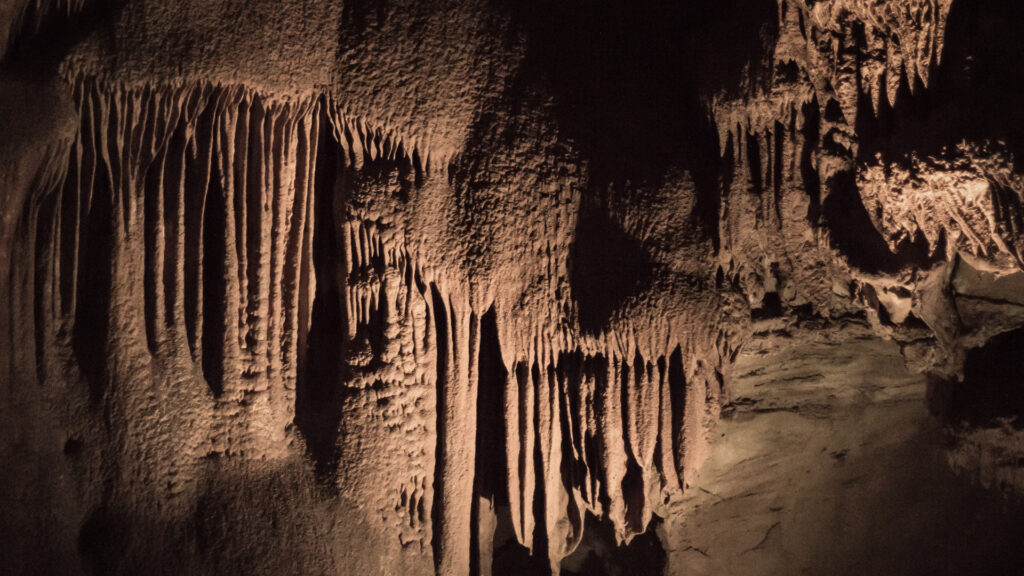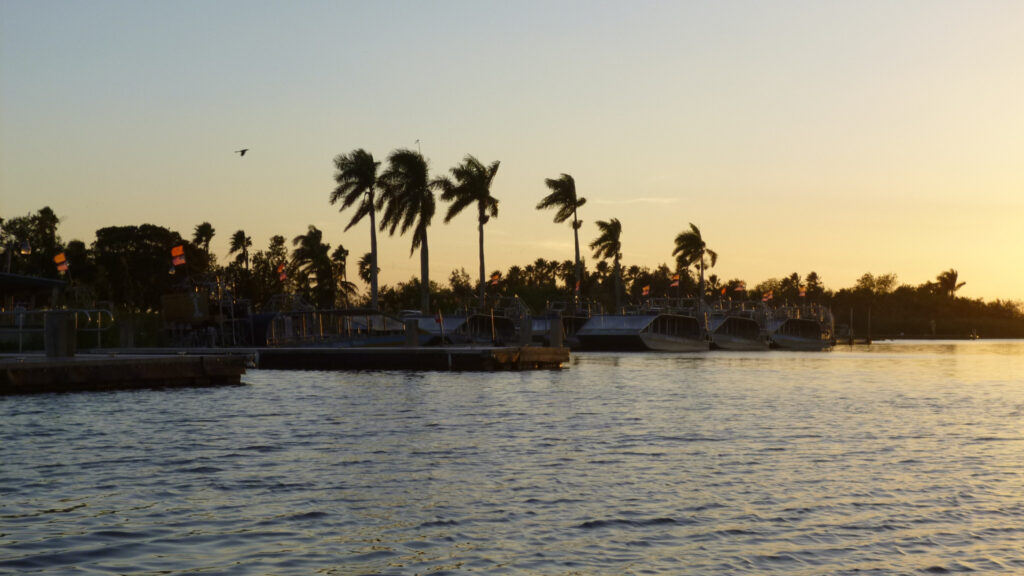Table of Contents Show
The Great Smoky Mountains is probably one of the most famous national parks in the southeast region, but what are the others?
You may be surprised to learn about an incredible variety of parks in this part of the country. Some showcase spectacular natural landscapes, while others call attention to important historical landmarks.
Visiting these parks makes for a fun and illuminating experience. In some cases, they are eye-opening lessons in history and science.
Are you ready to tour the best national parks in the Southeast? Let’s go!
What Are the States in the Southeast?
The United States has several geographic regions, which can vary depending on your source of information. Most people list them as the West, Midwest, Northeast, Southwest, and Southeast.
The Southeastern states make up the lower territory between the Mississippi River and the Atlantic Coast.
The National Park Service, which maintains our national parks, lists nine states in its Southeast region. They are Louisiana, Mississippi, Alabama, Georgia, Florida, Tennessee, Kentucky, North Carolina, and South Carolina.
The park service also includes Puerto Rico and the Virgin Islands in the Southeast region. Arkansas, on the other hand, is part of the park service’s Intermountain region, and Virginia is in the Northeast.
How Many National Park Designations Are in the Southeast Region?
The park service has 63 officially designated national parks and 423 other protected “NPS units.” In its Southeast region, the park service has seven national parks and 72 units.
While they’re not full-fledged national parks, these other sites are usually historically significant or incredibly scenic; and sometimes both.
They include things like national monuments, national parkways, national seashores, national battlefields, and national wild and scenic rivers.
Best National Parks in the Southeast Region
We’ll see some magnificent places on our curated tour of the Southeast. We’ll also visit park service sites shedding light on tragic chapters in American history.
Let’s start with the most-visited national park, which happens to be in the Southeast region.
Great Smoky Mountains National Park
Location: Spanning the border of Tennessee and North Carolina.
About The Park: The government established this incredible park in 1934. It covers approximately half a million acres, with slightly over half in North Carolina.
The breathtaking mountains, part of the Appalachians, get their name from the frequent morning fog. Popular attractions include Cades Cove, Clingmans Dome, and Laurel Falls.
Why It’s Worth A Visit: Visiting here is almost a rite of passage for outdoors-loving Americans, particularly those in the South. Rather than being remote, the Smokies are convenient to cities like Knoxville, Asheville, and Gatlinburg.
The park is also a gateway to the Blue Ridge Parkway and the Appalachian Scenic Trail.
Shenandoah National Park
Location: Along the Blue Ridge Mountains in Virginia.
About The Park: Though this park is in the park service’s Northeast region, most people would probably consider Virginia to be in the Southeast. This nearly 80,000-acre park dating to 1935, is only a few hours up the road from the Smokies.
Visitors can experience an almost exclusively wilderness area of forest and wetlands. At over 4,000 feet, Hawksbill Mountain is its highest peak.
Why It’s Worth A Visit: A cruise along Skyline Drive is a tranquil antidote to the busy Beltway area 75 miles eastward. It’s one of the best places to appreciate the diverse beauty of the Blue Ridge Mountains.
Mammoth Cave National Park
Location: In the Green River Valley of west-central Kentucky.
About The Park: Are you ready to go underground? This is the site of the longest known cave system, extending to around 400 miles.
There’s also a “bottomless” pit that turns out to be only about 100 feet deep. Above ground, more than 80 miles of hiking trails allow you to explore scenic rolling hills and strikingly picturesque valleys.
Why It’s Worth A Visit: The limestone cave is a marvel, and it’s so unexpectedly enormous that it might blow your mind.
Kayaking or canoeing on the Green River is another unforgettable experience. The park also has three campgrounds and many tucked-away places for backcountry excursions.
Pro Tip: Track your national parks adventures with our free printable map of the US National Parks!

Everglades National Park
Location: Near the southern tip of Florida.
About The Park: This watery wonderland covers about 1.5 million acres extending to the southernmost point in mainland Florida.
The park service calls these pristine wetlands “the largest subtropical wilderness in the United States.” There are three entrances, but they do not connect by roads. Guided-tour boat rides are one of the main activities.
Why It’s Worth A Visit: You might think it’s nothing but a swamp, but the Everglades is an amazingly diverse habitat for plants and animals.
There are alligators and crocodiles as well as manatees, rare turtles, dolphins, scores of seabirds, and even Florida panthers!

Biscayne National Park
Location: South of Miami, off Florida’s southern coast.
About The Park: Often overshadowed by the Everglades, Biscayne is a different marine sanctuary style. Entirely offshore, its mission is to preserve the irreplaceable mangrove forests and coral reefs of the northern Florida Keys.
Rangers lead visitors on guided eco-tours, and the waters are open to nearly every conceivable type of boating and fishing.
Why It’s Worth A Visit: Exploring these salty waters is stretching a tour of the Southeast to its outer limits. Tourists overrun many areas in the Florida Keys, but Biscayne tends to draw more serious, nature-minded visitors.
Appalachian National Scenic Trail
Location: Through 14 states, including Georgia, Tennessee, and North Carolina.
About The Park: We all have to start somewhere, and the Appalachian Trail begins at Springer Mountain in the Chattahoochee National Forest.
With the A.T. nickname, this wooded footpath follows nearly 2,200 miles of scenic mountain ridgelines northward to Maine. It takes several months to complete the entire length, but you can easily step in and out for shorter segments.
Why It’s Worth A Visit: You’ll get a taste of what many people consider a life-changing personal challenge.
Hiking the trail puts you intensely in touch with nature and will likely lead to new relationships with like-minded adventurers. At the very least, you’ll see the natural grandeur of the Southeast in a primitive light.
Keep in Mind: Now that you’ve seen the best national parks in the Southeast, check out These National Parks in the Northeast!
Wright Brothers National Memorial
Location: On Kill Devil Hills, on the Outer Banks of North Carolina.
About The Park: Aviation pioneers Wilbur and Orville Wright were from Indiana but needed a testing location with a few vital attributes.
Steady winds were a must, and so was a high point to take off from and a soft place to land. Their historic first powered airplane flight, eight feet off the ground for 12 seconds, happened in 1903.
Why It’s Worth A Visit: The stone marker, a standard obelisk, isn’t so impressive, but what the Wrights’ achievement led to will leave you inspired.
Their whole story is on display at the visitor center, along with a replica of their unsophisticated but groundbreaking aircraft.

Martin Luther King, Jr. National Historical Park
Location: Atlanta’s Sweet Auburn District, about a mile east of downtown.
About The Park: The charismatic Rev. Martin Luther King Jr. was the leader of America’s civil rights movement. As proof of his ongoing impact, this historical park devoted to his life is Atlanta’s top tourist attraction.
The park includes his childhood home and Ebenezer Baptist Church, where he served as pastor. The visitor center and the adjacent D.R.E.A.M. Gallery are full of historical memorabilia and artifacts.
Why It’s Worth A Visit: The guided tour of where he lived as a child gives you a glimpse into his early family life. He and his wife, Coretta Scott King, are interred at the Center for Nonviolent Change. It’s next door to the church.
Trail of Tears National Historic Trail
Location: In parts of North Carolina, Georgia, Alabama, Tennessee, and Kentucky.
About The Park: In the late 1830s, the government forced Cherokees to abandon their ancestral lands and make new homes on reservations in Oklahoma.
They forcibly relocated an estimated 16,000 people, and about a fourth died. Many traveled more than 5,000 miles on foot, while others relied on horses, wagons, or boats.
Why It’s Worth A Visit: Following the path of their painful journey will give you a new appreciation for its scope and what it took to survive.
In fact, the park service’s Southwest region contains only a portion of the Trail of Tears. Other segments are in Arkansas, Illinois, Missouri, and Oklahoma.

Birmingham Civil Rights National Monument
Location: Several blocks in downtown Birmingham, Ala.
About The Park: Established in 2017, this national monument includes several historic sites related to the Civil Rights movement of the 1960s.
One is the Gaston Motel, which served as a headquarters, and another is the site of a firebombed African-American church. A statue in a small park commemorates police using dogs to attack protestors.
Why It’s Worth A Visit: It wasn’t long ago that many citizens endured severe and constant discrimination and didn’t even have the right to vote. This monument is a sobering reminder of the violent struggle to win fundamental freedoms we enjoy and maybe take for granted.
National History and Natural Beauty: The National Parks of the Southeast Region
Traveling through the Southeast, you’ll see dozens of familiar brown-and-white signs with the arrowhead logo. That means you’re approaching another site that the national park considers crucial enough to preserve for future generations.
Some are incredibly scenic, while others preserve historical moments that helped shape our nation. Visiting these fantastic national parks in the Southeast region, you’ll also see how diverse the landscapes and cultures are.
If you’re like us, you wish you had time to stop and visit every national park, but it’s impossible.
We hope our list of the best national parks in the Southeast region will help you prioritize as you travel through this beautiful region.
Which location will you visit first?






